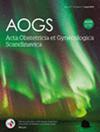Maternal time interval between menarche and childbirth is associated with daughter's age at menarche
Abstract
Introduction
Women's reproductive lifespan has increased over the past two decades. Simultaneously, female reproductive behavior has changed, with increasing age at first birth. Early menarche has been associated with adverse health outcomes, but research investigating the association between maternal age at childbirth and daughter's age at menarche is, so far, inconclusive. Whether the interval between menarche and childbirth or between childbirth and menopause among mothers is associated with age at menarche in daughters is not known.
Material and Methods
We conducted a cohort study with retrospectively collected data including mothers and daughters participating in the Norwegian Mother, Father and Child Cohort Study. Within this cohort, we identified two study populations. First, we included 14 576 mother-daughter pairs with complete information on maternal age at menarche and childbirth and the daughter's age at menarche. Second, we included 1350 mother-daughter pairs with complete information on maternal age at childbirth and natural menopause, and daughter's age at menarche. We calculated odds ratios (OR) with 95% confidence intervals (CIs) in a discrete survival analysis for daughters' age at menarche by time intervals from menarche to childbirth or from childbirth to menopause in mothers. We adjusted for relevant covariates.
Results
We found 5% lower yearly odds (partially adjusted OR 0.95 (CI 0.90–0.99)) of reaching menarche among daughters born by mothers <16 years after menarche compared to the reference category born 16–20 years following menarche. After additionally adjusting for maternal birth year, the effect estimate was further reduced (fully adjusted OR 0.79 (CI 0.74–0.84)). Among daughters born by mothers >20 years after menarche, the likelihood of early menarche was higher (fully adjusted OR 1.19 (CI 1.13–1.27)) compared to the reference category. Regarding the childbirth-menopause interval, our findings did not reach statistical significance in either of our models.
Conclusions
Daughters born to mothers with a shorter time interval (<16 years) between menarche and childbirth have a lower likelihood of experiencing early menarche compared to the reference category (16–20 years), and daughters born to mothers with a longer time interval from menarche to childbirth (>20 years) have a higher likelihood of reaching early menarche.


 求助内容:
求助内容: 应助结果提醒方式:
应助结果提醒方式:


